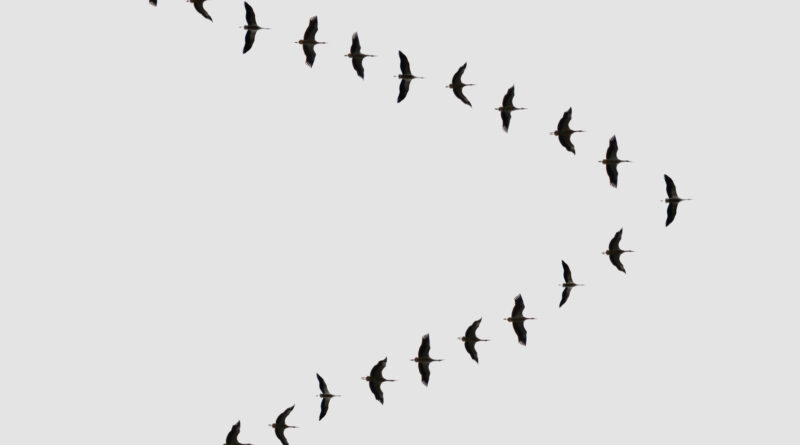The Measurement of “Interdisciplinarity” and “Synergy” in Scientific and Extra-Scientific Collaborations
The Measurement of “Interdisciplinarity” and “Synergy” in Scientific and Extra-Scientific Collaborations
Loet Leydesdorff and Inga Ivanova
This is a shortened and adapted version of “Interdisciplinarity and Synergy in Collaborations. Blogpost Gabriele Bammer, 20 October 2020. https://i2insights.org/2020/10/20/interdisciplinarity-versus-synergy/
Problem-solving often requires crossing boundaries, such as those between disciplines. However, the measurement and evaluation of “interdisciplinarity” can be confusing because the concept itself is composite. Does interdisciplinarity lead to synergy?
Interdisciplinarity
Stirling (2007; cf. Rao, 1982; Rafols & Meyer, 2010) distinguished between (i) variety, (ii) balance, and (iii) disparity as three aspects in the definition of of interdisciplinarity:
- Variety as the number of disciplines involved (e.g., in a collaboration);
- Balance as evenness of distribution, i.e., the relative strength of each discipline in the collaboration;
- Disparity as the degree of difference among the disciplines involved in the collaboration. For example, a biochemist and a sociologist are more distanced in terms of their disciplines than a biochemist and a physicist.
Using three separate indicators with values between zero and one for each aspect, multiplication provides a summary measure, for example, as follows:
DIVc = [nc /N)] ∙ [1 – Gini] ∙ [ }] (1)
In the definition of DIV:
- Variety is defined as (nc/N), with N being the total number of classes available and nc the number of classes with values larger than zero;
- The Gini Index can be used here as a measure of (un)balance;
- Disparity is similar to the measure (dij) in Rao-Stirling diversity (Δ = ), albeit normalized differently (cf. Rousseau, 2019). [1]
Thus, “interdisciplinarity” can be operationalized in bibliometrics in ways that are amenable to measurement.
Synergy
When policy makers call for “interdisciplinarity,” they often mean “synergy.” The measurement of “synergy” requires a methodology very different from “interdisciplinarity.” In general, synergy is the creation of a whole that is greater than the sum of its parts: additional options that become available because of a collaboration across disciplines can be measured using information theory: the total number of options in a configuration is (by definition) equal to the sum of the realized options and the not-yet-realized but possible ones. Shannon (1948) defined the proportion of non-realized but possible options [(Hmax – Hobs) / Hmax] as redundancy (R) and the proportion of realized options as relative uncertainty. If redundancy increases, the relative uncertainty decreases.
The same information can be appreciated differently by different disciplines. Whenever information is appreciated, a meaning is generated. Whereas information can be communicated, meanings can only be shared. Sharing generates an intersubjective layer with a dynamic different from information processing. The redundancy in the loops and overlaps can be measured in negative bits of information—as feedbacks which reduce uncertainty.
Meanings refer to intersubjective “horizons of meaning” that are instantiated in events. Whereas the events are historical, appreciations are analytical. Knowledge-based distinctions add to the redundancy by specifying empty boxes. A calculus of redundancy which remains consistent with Shannon’s information theory can thus be envisaged (Leydesdorff et al., 2018).
The generation of redundancy is based on mutual information. By appreciating the overlaps as redundant, the focus shifts from “past performance” to the cases that have not yet happened; that is, the zeros. The envisaged calculus remains connected to and is consistent with Shannon’s information theory, but can be used to study the domain of meanings and intentionality as relevant for generating surplus in scientific and extra-scientific collaborations.
Conclusion
In sum, the bibliometric measures help us to refine our ability to evaluate the extent and value of interdisciplinary research. Like other performance indicators, the measurement of interdisciplinarity is used to evaluate past performance. However, in bio-medical “translation research” (from bench to the bedside) or university-industry-government relations, synergy—potential for growth—is often more important than interdisciplinarity in the past. External stakeholders structure the configuration; this structuring can be appreciated in the case of synergy.
Synergy measures options that have not yet occurred and thus shifts the orientation from the past to the future. The generation of synergy, however, may be counter-intuitive because of non-linear interactions. Systems may run out of options such as in the case of lock-ins. The assessment of options informs policy-making differently from the sum of the perspectives of different disciplines. Software for measuring the various indicators of “interdisciplinarity” and “synergy” in a data matrix is made available from http://www.leydesdorff.net/software/interdisc.2020 and http://www.leydesdorff.net/software/synergy.triads, respectively.
References
Leydesdorff, L., Johnson, M., & Ivanova, I. (2018). Toward a Calculus of Redundancy: Signification, Codification, and Anticipation in Cultural Evolution. Journal of the Association for Information Science and Technology, 69(10), 1181-1192. doi: 10.1002/asi.24052
Leydesdorff, L., Wagner, C. S., & Bornmann, L. (2019). Interdisciplinarity as Diversity in Citation Patterns among Journals: Rao-Stirling Diversity, Relative Variety, and the Gini coefficient. Journal of Informetrics, 13(1), 255-264.
Rafols, I., & Meyer, M. (2010). Diversity and network coherence as indicators of interdisciplinarity: Case studies in bionanoscience. Scientometrics, 82(2), 263-287.
Rao, C. R. (1982). Diversity: Its measurement, decomposition, apportionment and analysis. Sankhy : The Indian Journal of Statistics, Series A, 44(1), 1-22.
Rousseau, R. (2019). On the Leydesdorff-Wagner-Bornmann proposal for diversity measurement. Journal of Informetrics, 13(3), 906-907.
Shannon, C. E. (1948). A Mathematical Theory of Communication. Bell System Technical Journal, 27 (July and October), 379-423 and 623-656.
Stirling, A. (2007). A general framework for analysing diversity in science, technology and society. Journal of the Royal Society Interface, 4(15), 707-719.
[1] Rousseau (2019) proved that (DIV* = N * DIV ) is a “true” measure of diversity.Cite this article in APA as: Ivanova, I. & Leydesdorff, L. (2021, September 15). The measurement of “interdisciplinarity” and “synergy” in scientific and extra-scientific collaborations. Information Matters. Vol.1, Issue 9. https://r7q.22f.myftpupload.com/2021/09/the-measurement-of-interdisciplinarity-and-synergy-in-scientific-and-extra-scientific-collaborations/






